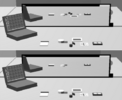




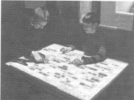
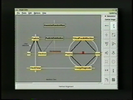


Studies of search habits reveal that people engage in many search tasks involving collaboration with others, such as travel planning, organizing social events, or working on a homework assignment. However, current Web search tools are designed for a single user, working alone. We introduce SearchTogether, a prototype that enables groups of remote users to synchronously or asynchronously collaborate when searching the Web. We describe an example usage scenario, and discuss the ways SearchTogether facilitates collaboration by supporting awareness, division of labor, and persistence. We then discuss the findings of our evaluation of SearchTogether, analyzing which aspects of its design enabled successful collaboration among study participants.

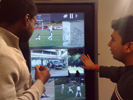

A proactive display is an application that selects content to display based on the set of users who have been detected nearby. For example, the Ticket2Talk [17] proactive display application presented content for users so that other people would know something about them.
It is our view that promising patterns for proactive display applications have been discovered, and now we face the need for frameworks to support the range of applications that are possible in this design space.
In this paper, we present the Proactive Display (ProD) Framework, which allows for the easy construction of proactive display applications. It allows a range of proactive display applications, including ones already in the literature. ProD also enlarges the design space of proactive display systems by allowing a variety of new applications that incorporate different views of social life and community.

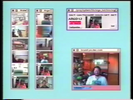



We introduce TwinSpace, a flexible software infrastructure for combining interactive workspaces and collaborative virtual worlds. Its design is grounded in the need to support deep connectivity and flexible mappings between virtual and real spaces to effectively support collaboration. This is achieved through a robust connectivity layer linking heterogeneous collections of physical and virtual devices and services, and a centralized service to manage and control mappings between physical and virtual. In this paper we motivate and present the architecture of TwinSpace, discuss our experiences and lessons learned in building a generic framework for collaborative cross-reality, and illustrate the architecture using two implemented examples that highlight its flexibility and range, and its support for rapid prototyping.

